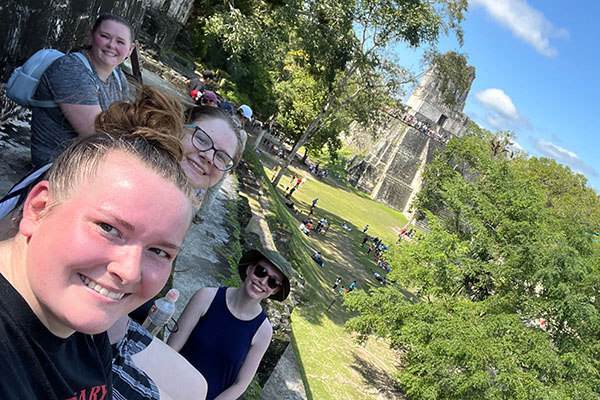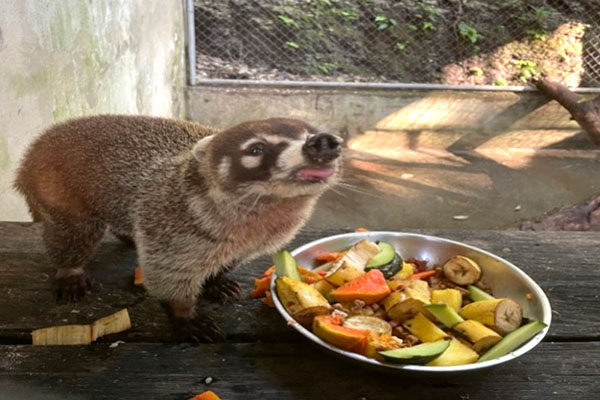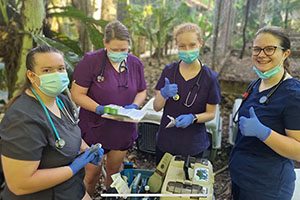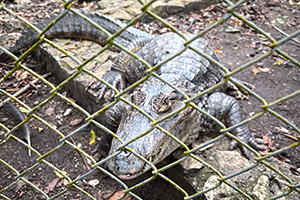



As undergraduate students, both Jayde Blain and Sarah Behrens studied outside the United States.
Blain traveled to Mexico, while Behrens spent a few months in Wales before the COVID pandemic forced her to return home. Both enjoyed their international experiences and didn’t hesitate to study abroad as third-year Iowa State veterinary students.
“I loved immersing myself in a different culture so much that I knew I wanted another experience at some point due to having the program being cut short so abruptly,” Behrens said. “I had heard such great things from others who had gone on this trip, there was no question about going.”
Behrens and Blain traveled to Guatemala to work with the Animal Rehabilitation and Wildlife Conservation Center (ARCAS). The ISU duo had more than 100 hours of hands-on experience working with primates, birds, and reptiles.
“After talking with friends who had gone on this trip in the past, I knew it would not only be a fun trip, but somewhere I could get a lot of hands-on experience,” Blain said. “The ability to learn about and work on exotic animals was too great of an opportunity to pass up.”
And based on what Behrens and Blain experienced, this trip was more of a work trip than a tourist excursion. The pair started their day at 6:30 a.m., working with the animals, cleaning cages, prepare their food, and helping their ARCAS colleagues.
The rest of a typical day would include lectures and working again with the animals before and after lunch.
“Once afternoon chores were done, we would get to work on cases and ask questions about what we had done throughout the day,” Blain said.
“We were pretty lucky while we were at ARCAS,” Behrens said. “We got to work with Moreletti crocodiles, parrots, peccaries, and spider monkeys.” During their experiences, the Iowa State duo conducted physical exams, gave injections to patients, took radiographs, did various swabs and DNA samples, and worked on restraint techniques.
One of the major draws to the program was working with animals students at Iowa State don’t see. After all, it’s not a common occurrence to see a crocodile or spider monkey in the hospital.
The hands-on experiences they received working with these animals far exceeded their expectations.
“I was pleased by how much experience we got,” Blain said, “especially since I worked with a variety of animals. I did so many skills repetitively, that I feel confident doing them on my own.”
Both Behrens and Blain are from rural communities. Behrens hails from Red Oak, Iowa, while Blain is a native of Cawker City, Kan. Each plan to return home to practice veterinary medicine after graduation in 2025.
“Unfortunately, even though there are a fair number of exotics in rural areas, the presence of exotics doesn’t necessarily mean rural veterinarians know a lot about them,” Blain said. “That is why I decided I would do my best to get at least a basic idea of how to treat exotic animals.
I want the people in my community to have someone they could come to for general illnesses their pets are experiencing.”
Behrens feels the same way.
“I knew going to Guatemala would expose me to more exotic species that will not be as thoroughly covered here at Iowa State,” Behren said. “I was able to get valuable experience to better prepare for those instances.”
And just like their friends who highly recommended the Guatemala international experience, Behrens and Blain will pass along their recommendations to other classmates.
“I am definitely a hands-on learner, and getting to touch cool things like crocodiles are things I never would have expected to get to during my time in vet school,” Behrens said. “I mean, how many people who go to vet school in Iowa can say they got the chance to determine the sex of a crocodile?”
February 2024
